Blog Archives
Peyton Manning Instructed to Take Break by Foot Specialist
 Peyton Manning has been told by foot specialist Dr. Robert Anderson of Charlotte, North Carolina to take a break for two weeks. For the past few months, Manning has been feeling a slight soreness in his left heel and apparently suffered a tear playing against the colts. Since then, the suffering has only continued and Manning has been put in a foot cast so he can get some rest and so his foot can get some healing.
Peyton Manning has been told by foot specialist Dr. Robert Anderson of Charlotte, North Carolina to take a break for two weeks. For the past few months, Manning has been feeling a slight soreness in his left heel and apparently suffered a tear playing against the colts. Since then, the suffering has only continued and Manning has been put in a foot cast so he can get some rest and so his foot can get some healing.
Playing with a sports injury can cause many problems with later on. If you have any concerns about your feet contact Dr. Sharon L. Pletcher of Pennsylvania. Our doctor will treat your foot and ankle needs.
Playing Sports with Foot Injuries
Many types of foot injuries affect athletes over the course of their athletic career. Despite their setbacks, many of these athletes will continue to play with mild foot injuries and attempt to ‘push’ through the pain. In order to be able to prevent injuries, it is important to stretch before any activity, wear proper footwear and replace shoes as needed. Some of the foot injuries athletes are at risk for include:
- Turf toe- upward bending of the big toe outside normal range of motion
- Stress Fractures
- Overpronation- excessive foot movement during gait
- Plantar Fasciitis- swollen ligament in the foot’s base
- Strains
For more serious injuries it is recommended to consult with a podiatrist or orthopedic specialist as fractures and other serious conditions may require surgery.
If you have any questions please feel free to contact our office located in State College, PA. We offer the newest diagnostic tools and technology to treat your foot and ankle needs.
Reasons to Stop Wearing High Heels
 High heels hurt, and there are many reasons why you should swap them for more comfortable shoes. Wearing high heels alters the positioning of your feet and gait, affecting your spine posture. It upsets your body balance, and can even result in blisters, corns, and bunion problems. According to Yahoo!, “wearing high heels every day can shorten calf muscles by up to 13 percent, as well as thicken and stiffen the Achilles tendon.” A study done by Stanford University in 2014 suggests that the strain can also lead to higher risks of osteoarthritis. If you still want to consider high heels, Yahoo! recommends getting the most comfortable heels, like wedges, which have thicker heels. Shop for shoes at night, when your feet are at their largest due to the swelling of fluid during the day, and maintain a healthy calcium balance to ensure your bones and muscles are strong.
High heels hurt, and there are many reasons why you should swap them for more comfortable shoes. Wearing high heels alters the positioning of your feet and gait, affecting your spine posture. It upsets your body balance, and can even result in blisters, corns, and bunion problems. According to Yahoo!, “wearing high heels every day can shorten calf muscles by up to 13 percent, as well as thicken and stiffen the Achilles tendon.” A study done by Stanford University in 2014 suggests that the strain can also lead to higher risks of osteoarthritis. If you still want to consider high heels, Yahoo! recommends getting the most comfortable heels, like wedges, which have thicker heels. Shop for shoes at night, when your feet are at their largest due to the swelling of fluid during the day, and maintain a healthy calcium balance to ensure your bones and muscles are strong.
High heels have a history for causing foot and ankle problems. If you have any concerns about your feet contact Dr. Sharon L. Pletcher of Pennsylvania. Our doctor will treat your foot and ankle needs.
Effects of High Heels on the Feet
High heels are popular shoes among women because they are associated with femininity. Despite their appeal, they can cause many health problems if worn too frequently.
What parts my body will be affected by high heels?
- Ankle Joints
- Achilles Tendon – may shorten and stiffen with prolonged wear
- Balls of the Feet
- Knees – heels cause the knees to bend constantly, creating stress on them
- Back – they decrease the spine’s ability to absorb shock, which may lead to back pain. Also, the vertebrae of the lower back may compress.
What kinds of foot problems can develop from wearing high heels?
- Corns
- Calluses
- Hammertoe
- Bunions
- Morton’s Neuroma
- Plantar Fasciitis
How can I still wear high heels and maintain foot health?
If you want to wear high heeled shoes, make sure that you are not wearing them every day, as this will help prevent long term physical problems. Try wearing thicker heels as opposed to stilettos to distribute weight more evenly across the feet. Always make sure you are wearing the proper shoes for the right occasion, such as sneakers for exercising. If you walk to work, try carrying your heels with you and changing into them once you arrive at work. Adding inserts to your heels can help cushion your feet and absorb shock; you can buy either full inserts or metatarsal pads.
If you have any questions please feel free to contact our office located in State College, PA. We offer the newest diagnostic tools and technology to treat your foot and ankle needs.
Don’t Ice Your Sprained Ankle
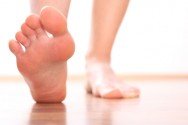 Latest research indicates that putting ice on your sprained ankle may not be good for you. The coldness of the ice can instead cut off the blood which supplies cells, instead delaying the healing process. The most recent National Athletic Trainers’ Association suggests elevating your sprained ankle, stretching, and taking over-the-counter anti-inflammatory medications like Advil or Aleve. You can also wrap your ankle with bandage, which reduces swelling.
Latest research indicates that putting ice on your sprained ankle may not be good for you. The coldness of the ice can instead cut off the blood which supplies cells, instead delaying the healing process. The most recent National Athletic Trainers’ Association suggests elevating your sprained ankle, stretching, and taking over-the-counter anti-inflammatory medications like Advil or Aleve. You can also wrap your ankle with bandage, which reduces swelling.
Ankle sprains are common, but need immediate attention. If you are having discomfort in your feet and would like to try orthotics, contact Dr. Sharon Pletcher of Pennsylvania. Our doctor will treat your foot and ankle needs.
How Does an Ankle Sprain Occur?
Ankle sprains take place when the ligaments in your ankle are torn or stretched beyond their limits. There are multiple ways that the ankle can become injured, including twisting or rolling over onto your ankle, putting undue stress on it, or causing trauma to the ankle itself.
What are the Symptoms?
- Mild to moderate bruising
- Limited mobility
- Swelling
- Discoloration of the skin (depending on severity)
Preventing a Sprain
- Wearing appropriate shoes for the occasion
- Stretching before exercises and sports
- Knowing your limits can aid in prevention
Treatment of a Sprain
Treatment of a sprain depends on the severity. Many times, people are told to rest and remain off their feet completely, while others are given an air cast. If the sprain is very severe, surgery may be required.
If you have suffered an ankle sprain previously, you may want to consider additional support such as a brace and regular exercises to strengthen the ankle.
If you have any questions please feel free to contact our office located in State College, PA. We offer the newest diagnostic tools and technologies to treat your foot and ankle needs.
Injury Prevention during Running Should Include Orthotics
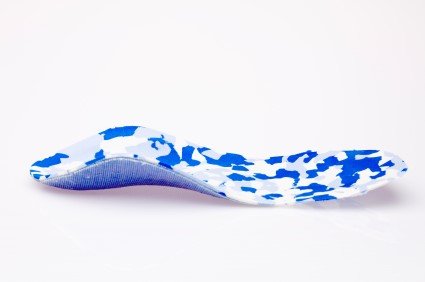 Everyone knows that running is difficult and calls for a tremendous amount of effort. Without proper foot support such as orthotics, running can become even more complicated. Getting fitted for orthotics is important for those participating in running to help prevent injury and improve gait. While running can become easier if you improve your form, the use of orthotics will improve your foot strike, the base of your running form.
Everyone knows that running is difficult and calls for a tremendous amount of effort. Without proper foot support such as orthotics, running can become even more complicated. Getting fitted for orthotics is important for those participating in running to help prevent injury and improve gait. While running can become easier if you improve your form, the use of orthotics will improve your foot strike, the base of your running form.
If you are having discomfort in your feet and would like to try orthotics, contact Dr. Sharon Pletcher of Pennsylvania. Our doctor will treat your foot and ankle needs.
What are Orthotics?
Orthotics are inserts you can place into your shoes to help with a variety of foot problems such as flat feet or foot pain. Orthotics provide relief and comfort for minor foot and heel pain, but can’t correct serious biomechanical problems in your feet.
Over-the-Counter Inserts
Orthotics come in a wide variety of over-the-counter inserts that are used to treat foot pain, heel pain, and minor problems. For example, arch supports can be inserted into your shoes to help correct over arched or flat feet, while gel insoles are often used because they provide comfort and relief from foot and heel pain by alleviating pressure.
Prescription Orthotics
If over-the-counter inserts don’t work for you, or if you have a more severe foot issue, it is possible to have your podiatrist prescribe custom orthotics. These high quality inserts are designed to treat problems such as abnormal motion, plantar fasciitis, and more severe heel pain. They can even be used to help patients suffering from diabetes by treating foot ulcers and painful calluses, and are usually molded to your feet individually, which allows them to provide full support and comfort.
If you are experiencing minor to severe foot or heel pain, it’s recommended to speak with your podiatrist on the possibilities of using orthotics. A podiatrist can determine which type of orthotic is right for you and allow you to take the first steps towards being pain free.
If you have any questions please feel free to contact our office located in State College, PA. We offer the newest diagnostic tools and technologies to treat your foot and ankle needs.
49ers’ Carlos Hyde Suffers Stress Fracture During Game
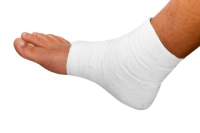 Carlos Hyde of the San Francisco 49ers recently faced the Seattle Seahawks while suffering a stress fracture to his foot, CBS Sports reports. Hyde had told a sideline reporter before the game that he had been experiencing soreness in his left foot for several weeks because of the injury. Hyde later acknowledged the pain in his right foot after the 49ers’ victory over the Baltimore Ravens. At one point during the game, he had collapsed on the field. He did return later. “I just put too much pressure, too much weight on it,” Hyde shared.
Carlos Hyde of the San Francisco 49ers recently faced the Seattle Seahawks while suffering a stress fracture to his foot, CBS Sports reports. Hyde had told a sideline reporter before the game that he had been experiencing soreness in his left foot for several weeks because of the injury. Hyde later acknowledged the pain in his right foot after the 49ers’ victory over the Baltimore Ravens. At one point during the game, he had collapsed on the field. He did return later. “I just put too much pressure, too much weight on it,” Hyde shared.
Sports related foot and ankle injuries need proper treatment before players can go back to their regular routines. If you have any concerns about your feet and ankles contact Dr. Sharon L. Pletcher of Pennsylvania. Our doctor will treat your foot and ankle needs.
Sport Related Foot and Ankle Injuries
Foot and ankle injuries are a common occurrence when it comes to athletes of any sport. While many athletes dismiss the initial aches and pains, the truth is that ignoring potential foot and ankle injuries can lead to serious problems. As athletes continue to place pressure and strain the area further, a mild injury can turn into something as serious as a rupture and may lead to a permanent disability. There are many factors that contribute to sports related foot and ankle injuries, which include failure to warm up properly, not providing support or wearing bad footwear. Common injuries and conditions athletes face, including:
- Plantar Fasciitis
- Plantar Fasciosis
- Achilles Tendinitis
- Achilles Tendon Rupture
- Ankle Sprains
Sports-related injuries are commonly treated using the RICE method. This includes rest, applying ice to the injured area, compression and elevating the ankle. More serious sprains and injuries may require surgery, which could include arthroscopic and reconstructive surgery. Rehabilitation and therapy may also be required in order to get any recovering athlete to become fully functional again. Any unusual aches and pains an athlete sustains must be evaluated by a licensed, reputable medical professional.
If you have any questions please feel free to contact our office located in State College, PA. We offer the newest diagnostic tools and technology to treat your foot and ankle needs.
Skateboarder Talks About Recovering from Injury
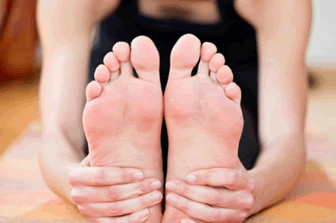 Skateboarder Andrew Allen recently caught up with Transworld Skateboarding to talk about his recent injury and all the things Allen plans to do next. Allen had been recovering from ankle surgery and a case of tarsal tunnel syndrome in his left foot. “It basically kept going numb,” Allen shared. “That’s been feeling a bit better now, so I’ve been skating more again.” When asked about the experience, Allen elaborated, “When I skated on it, it would get more intense--almost like it fell asleep, like pins and needles. I just had no feeling in it.”
Skateboarder Andrew Allen recently caught up with Transworld Skateboarding to talk about his recent injury and all the things Allen plans to do next. Allen had been recovering from ankle surgery and a case of tarsal tunnel syndrome in his left foot. “It basically kept going numb,” Allen shared. “That’s been feeling a bit better now, so I’ve been skating more again.” When asked about the experience, Allen elaborated, “When I skated on it, it would get more intense--almost like it fell asleep, like pins and needles. I just had no feeling in it.”
Tarsal tunnel syndrome can be very uncomfortable to live with. If you are experiencing tarsal tunnel syndrome, contact Dr. Sharon L. Pletcher of Pennsylvania. Our doctor will treat your foot and ankle needs.
Tarsal Tunnel Syndrome
Tarsal tunnel syndrome, which can also be called tibial nerve dysfunction, is an uncommon condition of misfiring peripheral nerves in the foot. The tibial nerve is the peripheral nerve in the leg responsible for sensation and movement of the foot and calf muscles. In tarsal tunnel syndrome, the tibial nerve is damaged, causing problems with movement and feeling in the foot of the affected leg.
Common Cause of Tarsal Tunnel Syndrome
-Involves pressure or an injury, direct pressure on the tibial nerve for an extended period of time, sometimes caused by other body structures close by or near the knee.
-Diseases that damage nerves, including diabetes, may cause tarsal tunnel syndrome.
-At times, tarsal tunnel syndrome can appear without an obvious cause in some cases.
The Effects of Tarsal Tunnel Syndrome
-Different sensations, an afflicted person may experience pain, tingling, burning or other unusual sensations in the foot of the affected leg.
-The foot muscles, toes and ankle become weaker, and curling your toes or flexing your foot can become difficult.
-If condition worsens, infections and ulcers may develop on the foot that is experiencing the syndrome.
A physical exam of the leg can help identify the presence of tarsal tunnel syndrome. Medical tests, such as a nerve biopsy, are also used to diagnose the condition. Patients may receive physical therapy and prescriptive medication. In extreme cases, some may require surgery.
If you have any questions please feel free to contact our office located in State College, PA. We offer the newest diagnostic tools and technology to treat your foot and ankle needs.
New Magic Number When it Comes to Running Shoes
 The new magic number when it comes to running shoes seems to be 61. According to Inquisitr, a new study of running shoes shows that consumer who spent $61 on average were the most satisfied with their running shoes vs consumers who spent way more, upwards of $200! It might not be the most profound revelation, but Benno Nigg, emeritus professor of kinesiology from the University of Calgary, simply states “the best shoe for your foot is the one that is most comfortable.”
The new magic number when it comes to running shoes seems to be 61. According to Inquisitr, a new study of running shoes shows that consumer who spent $61 on average were the most satisfied with their running shoes vs consumers who spent way more, upwards of $200! It might not be the most profound revelation, but Benno Nigg, emeritus professor of kinesiology from the University of Calgary, simply states “the best shoe for your foot is the one that is most comfortable.”
The right running shoe is essentially different for every person. If you have any concerns feel free to contact Dr. Sharon L. Pletcher of Pennsylvania. Our doctor will treat your foot and ankle needs.
Choosing the Right Running Shoes for Your Foot Type
Running is a physical activity although fun, can put a lot of stress on the joints, bones and ligaments of the body. Injury and stress on the foot can be an important factor on which kind of shoe you’re wearing. Running shoes should be worn based on your foot type. It is important to find out what fits you based on cushioning, stability and motion.
Determining your type
Speak with a shoe specialist or retail professional to see what your foot type is. They will be able to identify and measure your arch type, stride and gait.
Running Mechanics
When you are running or walking in your shoes, every step determines how your foot is landing. Pronation is the natural rolling of your ankle from outside to inside during foot strike.
Pronation is a correct form of walking or running. It helps absorb shock and store energy from your lower extremities. Neutral runners who pronate correctly do not need specific shoes, since they have stability and control.
Over-pronators
Those who run with excessive ankle rolling. Over-pronators tend to have ankles that angle inward, flat feet, and or bowed legs. This can cause a series of injuries: of the knees, ankles and Achilles tendons.
Under-pronation
Under-pronation is less common than over-pronation. This usually happens to those who have inflexible feet and high arches. Even though there is less rotational stress on the ankles and knees, it prevents any kind of shock absorptions. Under-pronation needs shoes with increase in cushion and flexibility.
If you have any questions please feel free to contact our office located in State College, PA. We offer the newest diagnostic tools and technology to treat your foot and ankle needs.
The Right Pointe Shoe Size is Vital for Ballerina Feet
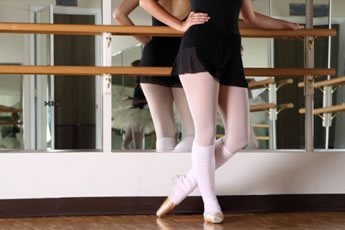 Ballerinas worldwide all struggle to maintain the right shoe size and fit of their pointe shoes. The right box, ribbon, and pinch is necessary to prevent foot problems. Noel Amend, a popular pointe shoe maker, often helps dancers find the right fit for them. “If you don’t get the shoe fit properly, the least of your worries would be blistering. It progresses from there...As in any sport, having good equipment is critical,” Amend states.
Ballerinas worldwide all struggle to maintain the right shoe size and fit of their pointe shoes. The right box, ribbon, and pinch is necessary to prevent foot problems. Noel Amend, a popular pointe shoe maker, often helps dancers find the right fit for them. “If you don’t get the shoe fit properly, the least of your worries would be blistering. It progresses from there...As in any sport, having good equipment is critical,” Amend states.
Getting the right shoe size is an important part of proper foot health. If you have any concerns about your feet contact Dr. Sharon L. Pletcher of Pennsylvania. Our doctor will treat your foot and ankle needs.
Getting the Right Shoe Size
There are many people that wear shoes that are ill-fitting, which affects their feet and posture. Selecting the right shoes is not a difficult process so long as you keep several things in mind when it comes to selecting the right pair.
- When visiting the shoe store, use the tools available to measure your foot
- When measuring your foot with your shoe on, add 1-2 inches to the size
- Be sure there is ‘wiggle room’. There should be about an inch between your toes and the tip of your shoes
- Do not always assume you are the same size, as manufacturers run differently
- Purchase shoes later in the day as your feet swell as the day progresses
- If a shoe is not comfortable, it is not suitable. Most shoes can’t be ‘broken in’, and comfort should be the ultimate goal when it comes to choosing the right pair of shoes
As our feet hold our body weight and keep us moving, it is important to treat your feet right by choosing the right pair of shoes that can provide them comfort and mobility with minimal pain.
If you have any questions please feel free to contact our office located in State College, PA. We offer the newest diagnostic tools and technology to treat your foot and ankle needs.
Chinese Woman Recalls having Bound Feet to Avoid Flat Feet
 An 84-year-old Chinese woman recounts how her feet were bound when she was just six years old in order to avoid “big, flat feet”. She says the painful process began when she was about six and caused her excruciating pain, especially at night, before they were loosened up. The practice of foot binding had been outlawed but even decades later, it still occurred.
An 84-year-old Chinese woman recounts how her feet were bound when she was just six years old in order to avoid “big, flat feet”. She says the painful process began when she was about six and caused her excruciating pain, especially at night, before they were loosened up. The practice of foot binding had been outlawed but even decades later, it still occurred.
Most arches will develop in children after a certain age. If you suspect that your child has the condition, speak to Dr. Sharon L. Pletcher of Pennsylvania. Our doctor will answer any of your foot and ankle related questions and attend to all of your podiatric needs.
What are Flat Feet?
Flat feet are a condition in which the arch of the foot is depressed and the sole of the foot is almost completely in contact with the ground. Standing about 20-30% of the population generally has flat feet because their arch never formed during growth.
Conditions & Problems:
Having flat feet makes it difficult to run or walk because of the stress placed on the ankles.
Alignment – The general alignment of your legs can be disrupted, because the ankles move inward which can cause major discomfort.
Knees – if you have complications with your knees, flat feet can be a contributor to arthritis in that area.
Symptoms:
Pain around the heel or arch area
Trouble standing on the tip toe.
Swelling around the inside of the ankle.
Flat look to one or both feet.
Having your shoes feel uneven when worn
Treatment:
If you are experiencing pain and stress on the foot you may weaken the posterior tibial tendon, which runs around the inside of the ankle.
If you have any questions please feel free to contact our office located in State College, PA. We offer the newest diagnostic tools and treatments for your foot and ankle needs.
Detroit Lions Welcomes Back Alex Carter After Ankle Sprain
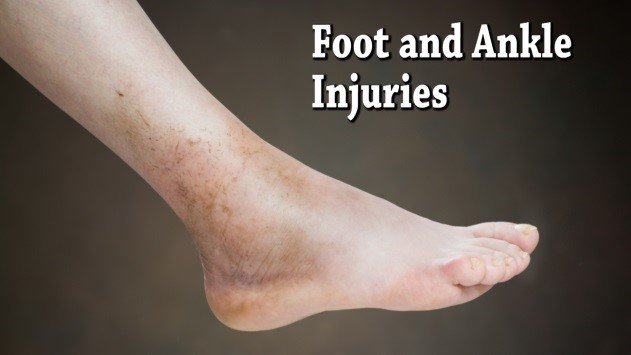 Alex Carter of the Detroit Lions recently partook in his first practice since having sprained his ankle. The rookie cornerback was sidelined for all of training camp due to the injury. Carter only participated in individual drills. “I’m doing as much as I can do right now,” he stated. “We’re still working on the progression, getting back. But this week will be a good week for me.” Detroit Lions coach Jim Caldwell shared that he is not rushing Carter’s return: “He’s missed so much, it’s going to take him a little bit to catch up.”
Alex Carter of the Detroit Lions recently partook in his first practice since having sprained his ankle. The rookie cornerback was sidelined for all of training camp due to the injury. Carter only participated in individual drills. “I’m doing as much as I can do right now,” he stated. “We’re still working on the progression, getting back. But this week will be a good week for me.” Detroit Lions coach Jim Caldwell shared that he is not rushing Carter’s return: “He’s missed so much, it’s going to take him a little bit to catch up.”
Getting back into sports after injuring a foot or ankle can be very difficult for both the body and mind. See Dr. Sharon L. Pletcher of Pennsylvania. Our doctorwill attend to all of your foot and ankle needs.
Getting Back into Sports after Foot and Ankle Injuries
While one of the most common injuries among athletes may be a sprained ankle, there are still many other types of injuries that plague athletes in any sport. But for less severe foot and ankle injuries, it is recommended by physical therapists and sports medicine doctors that athletes use the R.I.C.E. method to help alleviate pain and to speed up the healing process.
The acronym R.I.C.E. stands for rest, ice, compression, and elevation. These four steps help in the healing process, not only to reduce pain, swelling, and inflammation, but also to improve overall health of the affected area, allowing you to get back on to your feet again. Although resting is usually the key to all healing, it is necessary to see a doctor to ensure treatment for any other problems that may not be obvious to you right away.
It is best for injured athletes to allow themselves time to heal. Some athletes need hours of re-training, exercise, check-ups with their physical therapist, and other remedies.
If you have any questions, please feel free to contact our office in State College, PA. We offer the newest diagnostic and treatment technologies for all your foot care needs.
Read more about Getting Back into Sports after Foot and Ankle Injuries
More...
Rumer Willis Able to Dance Again After Stress Fracture
 Rumer Willis, the season 20 champion of ABC’s Dancing with the Stars, has recently shared with her fans that she will soon be able to dance after recovering for several weeks from some stress fractures in her right foot. The fractures occurred while Willis was on the Dancing with the Stars Live! Perfect Ten tour in June. Willis’s recovery is good news, as she is scheduled to make her Broadway debut in the musical Chicago. “I am so grateful for everyone who put up with me while I was so miserable in my boot not being able to dance and for the amazing people that got me back on my feet again.” she shared.
Rumer Willis, the season 20 champion of ABC’s Dancing with the Stars, has recently shared with her fans that she will soon be able to dance after recovering for several weeks from some stress fractures in her right foot. The fractures occurred while Willis was on the Dancing with the Stars Live! Perfect Ten tour in June. Willis’s recovery is good news, as she is scheduled to make her Broadway debut in the musical Chicago. “I am so grateful for everyone who put up with me while I was so miserable in my boot not being able to dance and for the amazing people that got me back on my feet again.” she shared.
Activities, where too much pressure is put on the feet can cause stress fractures. If you have any concerns about your feet or ankles, contact Dr. Sharon L. Pletcher of Pennsylvania. Our doctor will attend to all of your foot and ankle needs and provide you with quality treatment.
Dealing with Stress Fractures of the Foot and Ankle
The Stress Fractures occur on the foot and ankle when muscles in these areas weaken from too much or too little use. Then the feet and ankles lose support when walking or running from the impact of the ground. Since there is no protection the bones receive the full impact of each step. The stress on the feet causes cracks to form in the bones, thus called stress fractures.
What are Stress Fractures?
Stress fractures occur frequently in individuals whose daily activities cause great impact on the feet and ankles. Stress factors are most common among:
-runners
-people affected with Osteoporosis
-play tennis or basketball
-gymnastics
-high impact workouts
Symptoms
Pain from the fractures occur in the area of the fractures, and can be constant or intermittent. It will often cause sharp or dull pain with swelling and tenderness. Engaging in any kind of activity which involves in high impact will aggravate pain.
For more information about Stress Fractures of the Foot and Ankle, follow the link below.
If you have any questions feel free to contact our office located in State College, PA. We offer the latest in diagnostic and treatment technology to meet your needs.
Research Finds Yoga Helps Reduce the Pains of Arthritis
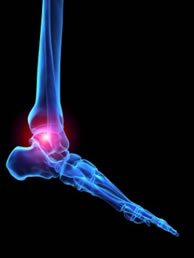 Arthritis is a disease that often causes those affected to go without exercise due to the pain. Nearly 44% of those with arthritis say they don’t exercise and nearly 88% say they are not nearly active enough. According to a controlled trial published in the Journal of Rheumatology, those with arthritis that practiced yoga at least three times a week had an improvement in pain, energy, mood, and physical health. According to Dr. Clifton O. Bingham III, associate professor of John Hopkins University, “It has really been transformative for a lot of my patients.” For some of Dr. Bingham’s patients, yoga has helped them through arthritis for over five years.
Arthritis is a disease that often causes those affected to go without exercise due to the pain. Nearly 44% of those with arthritis say they don’t exercise and nearly 88% say they are not nearly active enough. According to a controlled trial published in the Journal of Rheumatology, those with arthritis that practiced yoga at least three times a week had an improvement in pain, energy, mood, and physical health. According to Dr. Clifton O. Bingham III, associate professor of John Hopkins University, “It has really been transformative for a lot of my patients.” For some of Dr. Bingham’s patients, yoga has helped them through arthritis for over five years.
Arthritis can be a difficult condition to live with. If you are suffering from arthritic foot pain, contact Dr. Sharon L. Pletcher of Pennsylvania. Our podiatrist can treat your foot and ankle needs.
Arthritic Foot Care
Arthritis is a joint disorder that involves inflammation of different joints in your body, such as in your feet. Arthritis is often caused by a degenerative joint disease and causes mild to severe pain in all affected areas. On top of this, swelling and stiffness in the affected joints can also be a common symptom of arthritis.
In many cases, wearing ill-fitting shoes can worsen the effects and pain of arthritis. Wearing shoes that have a lower heel and extra room can help your feet feel more comfortable. In cases of rheumatoid arthritis, the arch in your foot may become problematic. Buying shoes with proper arch support that contour to your feet can help immensely.
Alleviating Arthritic Pain
- Exercises that stretch the foot can prevent further pain and injury and increase mobility
- Most of the pain can be alleviated with anti-inflammatory drugs, heat, and topical medications
- Massages can help to temporarily alleviate pain.
It is best to see your doctor for the treatment that is right for your needs and symptoms. Conditions vary, and a podiatrist can help you determine the right method of care for your feet.
If you have any questions about arthritic foot care, please feel free to contact our office located in State College, PA. We offer the newest diagnostic and treatment technologies for all your foot and ankle needs.
Manchester United Player Suffers Double Fracture in Ankle
 Luke Shaw of Manchester United suffered a double fracture in his ankle during the Champions League match. Shaw, who was transferred from Southampton for $46 million, was hit by Hector Moreno of PSV Eindhoven and hit the grass where he was unable to get up for 10 minutes. Upon viewing a slow motion replay, it was revealed that Shaw’s leg was unfortunately caught in the tumble causing a double fracture. The 20-year-old striker will have to face surgery and will miss the rest of the matches in the tournament according to United manager Louis Van Gaal.
Luke Shaw of Manchester United suffered a double fracture in his ankle during the Champions League match. Shaw, who was transferred from Southampton for $46 million, was hit by Hector Moreno of PSV Eindhoven and hit the grass where he was unable to get up for 10 minutes. Upon viewing a slow motion replay, it was revealed that Shaw’s leg was unfortunately caught in the tumble causing a double fracture. The 20-year-old striker will have to face surgery and will miss the rest of the matches in the tournament according to United manager Louis Van Gaal.
Broken ankles need immediate treatment. If you have any concerns about your feet and ankles contact Dr. Sharon L. Pletcher of Pennsylvania. Our doctor will treat your foot and ankle needs.
Broken Ankles
A broken ankle is experienced when a person fractures their tibia or fibula in the lower leg and ankle area. Both of these bones are attached at the bottom of the leg and combine to form what we know to be our ankle.
When a physician is referring to a break of the ankle, he or she is usually referring to a break in the area where the tibia and fibula are joined to create our ankle joint. Ankles are more prone to fractures because the ankle is an area that suffers a lot of pressure and stress. There are some obvious signs when a person experiences a fractured ankle, and the following symptoms may be present.
Symptoms of a Fractured Ankle
- Excessive pain when the area is touched or when any pressure is placed on the ankle
- Swelling around the area
- Bruising of the area
- Area appears to be deformed
If you suspect an ankle fracture, it is recommended to seek treatment as soon as possible. The sooner you have your podiatrist diagnose the fracture, the quicker you’ll be on the way towards recovery.
If you have any questions please feel free to contact our office located in State College, PA. We offer the newest diagnostic tools and technology to treat your foot and ankle needs.
Heavy Sports Involvement Can Result in Plantar Fasciitis
 Nearly 2 million people in the United States are affected by plantar fasciitis each year. While anyone can get plantar fasciitis, some say there has been an increase in recent years due to heavy sports involvement. Plantar fasciitis occurs when the band stretching from the toes to the heels and is often referred to as “heel pain syndrome.” While sports such as running seems to be a major cause of the condition, those that are often on their feet, athletes, and improper shoe wearers can all suffer. Pain from an overused fascia can go undetected for a long time until the band becomes so strained and inflamed.
Nearly 2 million people in the United States are affected by plantar fasciitis each year. While anyone can get plantar fasciitis, some say there has been an increase in recent years due to heavy sports involvement. Plantar fasciitis occurs when the band stretching from the toes to the heels and is often referred to as “heel pain syndrome.” While sports such as running seems to be a major cause of the condition, those that are often on their feet, athletes, and improper shoe wearers can all suffer. Pain from an overused fascia can go undetected for a long time until the band becomes so strained and inflamed.
Plantar fasciitis can be very painful and inconvenient. If you are experiencing heel pain or symptoms of plantar fasciitis, visit Dr. Sharon L. Pletcher of Pennsylvania. Our doctors can treat your heel pain as well as any other foot or ankle condition.
What is Plantar Fasciitis?
Plantar fasciitis is the inflammation of a the thick band of tissue that runs along the bottom of your foot, known as the plantar fascia, and causes mild to severe heel pain.
What Causes Plantar Fasciitis?
· Excessive running
· Non-supportive shoes
· Overpronation
· Repeated stretching and tearing of the plantar fascia
How Can It Be Treated?
· Conservative measures – anti-inflammatories, ice packs, stretching exercises, physical therapy, orthotic devices
· Shockwave therapy – sound waves are sent to the affected area to facilitate healing and are usually used for chronic cases of plantar fasciitis
· Surgery – usually only used as a last resort when all else fails. The plantar fascia can be surgically detached from the heel
While very treatable, plantar fasciitis is definitely not something that should be ignored. Especially in severe cases, speaking to your doctor right away is highly recommended to avoid complications and severe heel pain. Your podiatrist can work with you to provide the appropriate treatment options tailored to your condition.
If you have any questions, please contact our office in State College, PA. We offer the newest diagnostic and treatment technologies for all your foot and ankle injuries.




